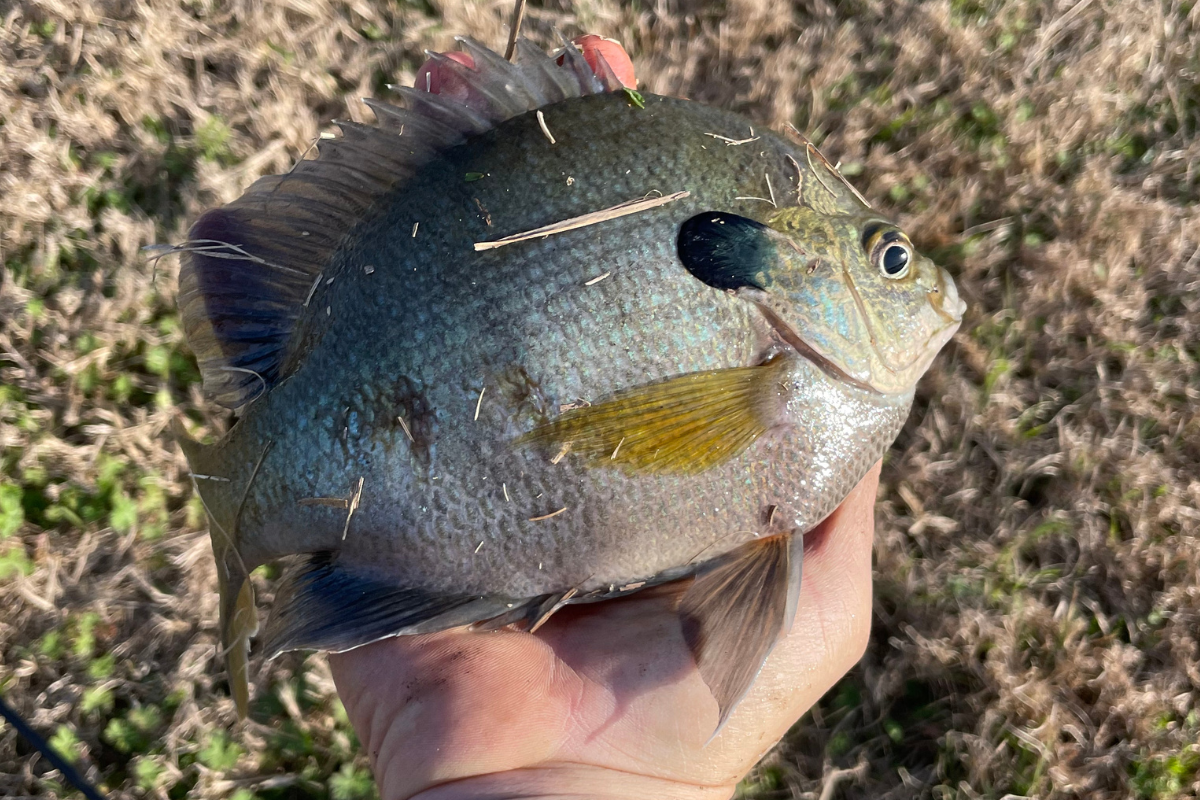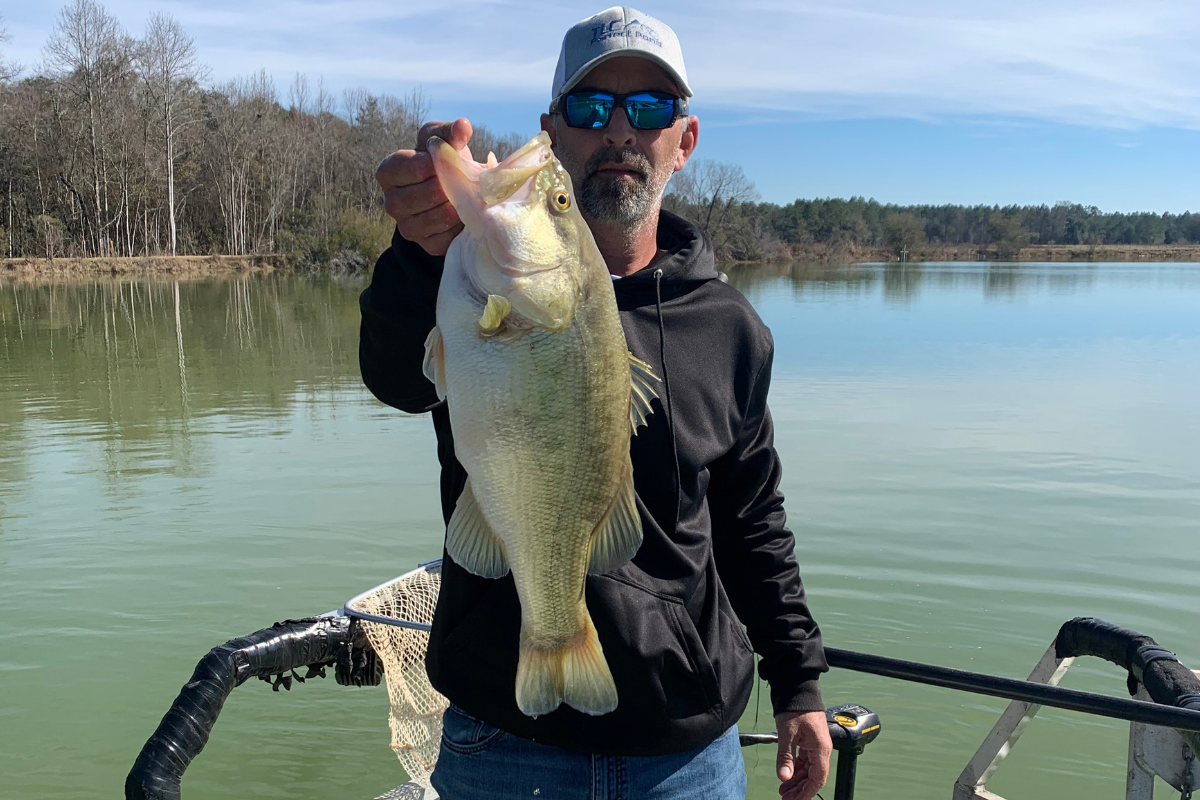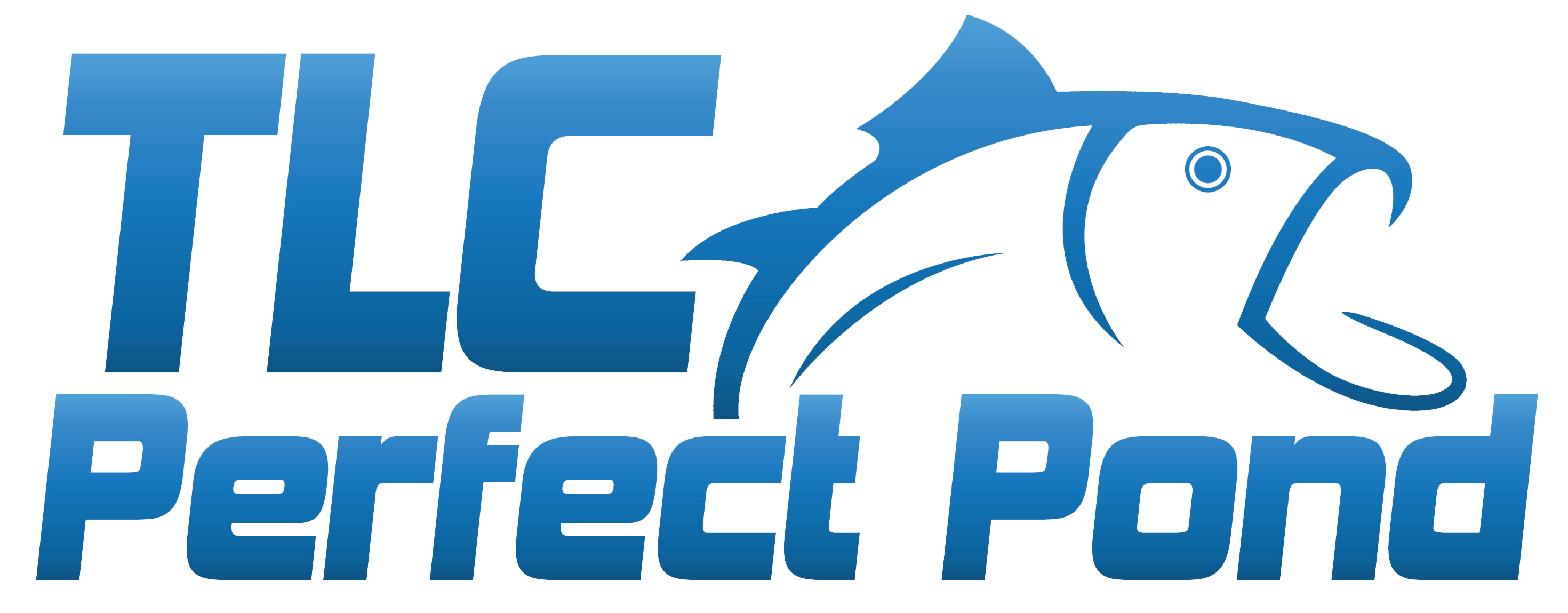Factors Leading to Slow Fish Growth
You’ve stocked a new pond or an existing pond, but are not seeing the growth you’d expect from the fish you’ve stocked? Why aren’t your fish growing as fast as they should be growing? There’s not always a simple answer to this, but we’ll use this blog to explain a few possibilities.
We regularly perform population surveys on a wide variety of ponds from just a couple acres to 50+ acres. Some of these ponds exhibit incredible fish growth rates while others are full of skinny fish. But through sound management practices, you can transition those underperforming ponds to above average fish growth in a year or two.
It all boils down to resources, space, and habitat. If you don’t have all three things, the growth of the predator and prey populations in your pond will likely be compromised. Below we’ll describe how each scenario can lead to less than optimal fish growth.

Fish Growth Factor 1: Limited Food
Every living organism needs food to survive and grow. Some organisms (like us humans) exhibit determinate growth, which means they stop growing once they reach the age of maturity. Other organisms (like fish) exhibit indeterminate growth and will continue to grow as they age.
Because fish grow indeterminately, it’s important to make sure they have plenty of food to eat in your pond. Otherwise, they won’t keep growing and they won’t be as healthy as they could be. If food resources are limited, fish growth will be limited.
When determining what resources might be limited, it’s important to look at the entire pond food chain. Recall from previous blogs that the simplified pond food chain follows the pathway of primary producers (phytoplankton) to prey fish (bluegill) to predator fish (largemouth bass). There are other components to an actual pond food web, but these are the levels that we can actually manage. We can’t really manage zooplankton, invertebrate, or minnow populations.
If primary producers (phytoplankton) are limited, this will likely cascade through the food chain and have an effect on both predator and prey species. Without an abundant phytoplankton population, prey fish like bluegill will not grow to optimal size. And without a healthy bluegill population, the largemouth bass population will likely be substandard as well.

Fish Growth Factor 2: Population Density
Overpopulation is one of the most common issues we see in the ponds we survey. Many pond owners are so worried about their ponds being overfished, and the result is that they don’t get fished enough. A healthy pond should have prey and predator fish removed from it every year. This contributes to genetic diversity and an overall healthier balance of prey and predators.
The suggested amount of fish removal per year will depend on water fertility. Many more fish can be removed per year in fertile ponds as opposed to infertile ponds. This goes back to the simplified pond chain mentioned above. If you don’t have a strong plankton population, you probably won’t have quality bluegill or bass populations.
Agricultural ponds are usually fertile due to crop fertilizer or manure runoff. Other ponds may need fertilization by a pond management company like ourselves. An unfertilized pond can support 40 lbs of bluegill and 10 lbs of bass harvested per acre per year. A fertile pond can support 160 lbs of bluegill and 35 lbs of bass harvested per year per acre.
Considering this data, think about how many pounds of fish are harvested from your pond each year. It’s probably nowhere near those numbers. Don’t worry about your pond being overfished. Remove fish yearly and enjoy your harvests!
Fish Growth Factor 3: Habitat
In a previous blog we discussed the ideal shape for a fishing pond. The more curves you have along the perimeter of the pond, the more prime fish habitat it will have. Irregularly shaped ponds almost always have stronger bluegill and bass populations than round or square ponds.
Prey fish need places to hide and predator fish need places to hunt. This is why underwater structure and pond shape is so important. Bluegill will need some type of refuge for spawning so that the population can continue to grow, and largemouth bass will need ambush habitat so they can easily feed. Without proper ambush habitat, largemouth bass spend too much energy chasing prey and fish growth is limited.
Let Up Help Improve Your Pond!
If you’re in the south GA or north FL areas, we’ll be glad to help with your new pond or an existing pond that is struggling to maintain healthy fish populations. Just complete this form and we’ll contact you to schedule a time to meet. We look forward to turning your pond into a productive fishery for years to come!

